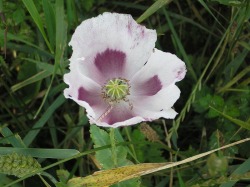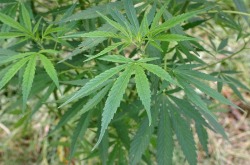The Evolutionary Significance of Psychoactive Drugs
History of Psychoactive Drug Use
Anthropological evidence and personal accounts indicate that humans have been using psychoactive substances for many millennia. This is a partial list of just a few of the most ancient users of psychoactive substances (Sullivan and Hagen, 2002).
· 13000 y.a. – The betel nut was chewed in Timor.
· 10700 y.a. – The betel nut was chewed in Thailand.
· Before European contact – The Aborigines used pituri and Nicotiana (both nicotine).
· Before European contact – Native Americans used tobacco.
· Before European contact – Ethiopians used khat.
· 7000 y.a. – Coca was being used in the Andes.
· 5000 y.a. – Coca was being used in Equador
The extensive nature of psychoactive substance use by humans is quite interesting considering what we know now about the harmful nature of such substances. However, the use of substances longs ago is quite different from the types of useages today. For example, in cultures where the above drugs are used, the substances are not viewed as drugs, but as food, which is easy to believe seeing as they do not come in modern purified forms, but as plants (Sullivan and Hagen, 2002).
· 13000 y.a. – The betel nut was chewed in Timor.
· 10700 y.a. – The betel nut was chewed in Thailand.
· Before European contact – The Aborigines used pituri and Nicotiana (both nicotine).
· Before European contact – Native Americans used tobacco.
· Before European contact – Ethiopians used khat.
· 7000 y.a. – Coca was being used in the Andes.
· 5000 y.a. – Coca was being used in Equador
The extensive nature of psychoactive substance use by humans is quite interesting considering what we know now about the harmful nature of such substances. However, the use of substances longs ago is quite different from the types of useages today. For example, in cultures where the above drugs are used, the substances are not viewed as drugs, but as food, which is easy to believe seeing as they do not come in modern purified forms, but as plants (Sullivan and Hagen, 2002).

Some uses of psychoactive substances by ancient people are also very similar to their uses today. They could be used as medicines ("drug use") and in religious ceremonies ("drug cult"). Opiates, drugs made from the poppy plant, have an especially long and extensive history. Their earliest known use was in Mesopotamia almost 7000 years ago. From there they have been used as medicine by Hippocrates, Assyrians, and Islamic, and many civilizations have used opium as a narcotic ("drug use"). Today, morphine is used as a common painkiller in hospitals and heroin is a dangerous narcotic.
Hallucinogens have a history that goes back almost 2000 years ("drug use"). The peyote cacutus was used by Native Americans in religious practices for quite some time. The mushroom containing psilocybin was used in a similar style in Guatamala by the Mayans. More recently LSD, or lysergic acid diethylamide, was developed. The hallucinations produced by these substances often seem religious in nature, leading to their eventual use in a religious context ("drug cult").

The use of Cannabis begins in 3000 BC in China. It has been used for its medicinal characteristics for most of its use, including today ("drug use"). Cannabis has also been used in religious ceremonies since at least 5th century BC. Then it was used by a people in the Altai Mountains and today it is used in religious practices by people in India and Africa ("drug cult").
Some experts today even believe that psychoactive drugs are responsible for aspects of some cultures. Marlene Dobkin de Rios believes that psychoactive substances were major influences on Mayan religion and art (Dobkin de Rios et al. 1974). The religion of the Huichol Indians in Mexico is based on consuming peyote through which they communicate with their gods. It has also played a major part in their art (Haviland). In these two societies, a psychoative substance was a major contributor to culture. With such a long history and widespread use, who knows what kinds of influences these substances could have had on human civilizations throughout the years?
Animals and Psychoactive Substances
Humans are not the only animal to utilize psychoactive substances either. There have been instances of crows, cats, elephants, and monkeys all partaking in some sort of intoxication using these substances (Seigel). These occasions of use by both humans and animals raise many questions about the nature of animal-drug relationships. Particularly, they raise questions about how plants and animals evolved so that certain plants have the effects that they do on the animal nervous system. They also make us wonder why an animal would be driven to use such substances. The video below provides an interesting parallel between the psychoactive substance use habits and those of our primate relatives.
Sources
Dobkin de Rios, Marlene et al. “The Influence of Psychotropic Flora and Fauna on Maya Religion.” Current Anthropology 15 (1974): 147-164. Print.
"drug cult." Encyclopædia Britannica. 2010. Encyclopædia Britannica Online. 10 Apr. 2010 <http://www.britannica.com/EBchecked/topic/172013/drug-cult>.
"drug use." Encyclopædia Britannica. 2010. Encyclopædia Britannica Online. 10 Apr. 2010 <http://www.britannica.com/EBchecked/topic/172024/drug-use>.
Haviland William A. et al. The Essence of Anthropology. 2nd ed. Belmont, CA: Wadsworth, 2010. Print.
Siegel, Ronald K. Intoxication: life in pursuit of artificial paradise. New York: Penguin, 1989. Print.
Sullivan R. J., Hagen E.H. “Psychotropic substance-seeking: evolutionary pathology or adaptation?” Addiction 97 (2002): 389-400. Print.
"drug cult." Encyclopædia Britannica. 2010. Encyclopædia Britannica Online. 10 Apr. 2010 <http://www.britannica.com/EBchecked/topic/172013/drug-cult>.
"drug use." Encyclopædia Britannica. 2010. Encyclopædia Britannica Online. 10 Apr. 2010 <http://www.britannica.com/EBchecked/topic/172024/drug-use>.
Haviland William A. et al. The Essence of Anthropology. 2nd ed. Belmont, CA: Wadsworth, 2010. Print.
Siegel, Ronald K. Intoxication: life in pursuit of artificial paradise. New York: Penguin, 1989. Print.
Sullivan R. J., Hagen E.H. “Psychotropic substance-seeking: evolutionary pathology or adaptation?” Addiction 97 (2002): 389-400. Print.
